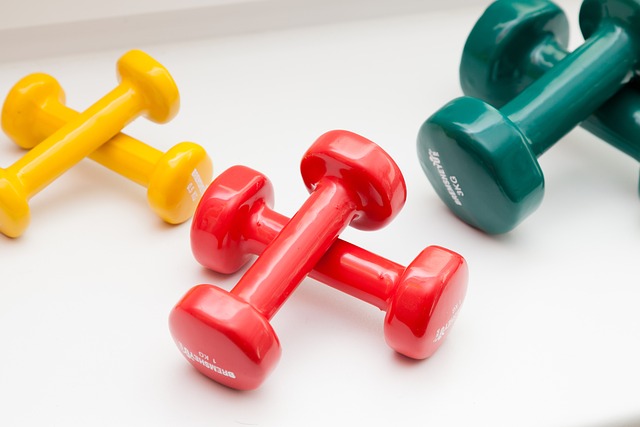Cold therapy, including ice packs, cryotherapy, and cold water immersions, effectively reduces joint swelling and provides natural joint pain relief. By constricting blood vessels and decreasing inflammation, these methods accelerate recovery times and enhance mobility for arthritis and other inflammatory conditions. While safe for most, individuals with poor circulation or nerve damage should consult a healthcare professional before attempting cryotherapy. Embrace the benefits of cold therapy for managing joint pain and inflammation naturally.
Decreasing Joint Swelling with Cryotherapy: A Natural Approach to Pain Relief
Joint swelling, a common symptom of arthritis and other inflammatory conditions, can significantly impact mobility and quality of life. This article explores the effectiveness of cryotherapy as a natural method to combat joint pain and reduce swelling. We delve into the science behind cold therapy for joints, its various techniques, and the benefits it offers as a non-invasive solution. From understanding the cause of inflammation to exploring different cryotherapy applications, discover how this ancient practice can aid in joint recovery and provide much-needed relief.
Understanding Joint Swelling and Its Impact
Joint swelling, or edema, is a common condition that occurs when excess fluid accumulates in the spaces around joints. This can be caused by various factors such as injury, inflammation, arthritis, or overactivity. When left untreated, joint swelling can lead to significant discomfort, reduced mobility, and even long-term damage to articular cartilage. The impact of this condition extends beyond physical pain; it can affect a person’s quality of life, limiting their ability to perform daily tasks and engage in activities they enjoy.
Applying cold therapy, such as ice packs or cryotherapy, is a highly effective way to combat joint swelling and provide much-needed relief. Cold temperatures help constrict blood vessels, reducing blood flow to the affected area and minimizing fluid retention. Benefits of using a cold compress for joints include decreased inflammation, pain reduction, and accelerated recovery time. Ice therapy for arthritis, in particular, has been shown to improve symptoms and enhance overall joint function. Additionally, cold water therapy for joint recovery is gaining popularity as a natural joint pain relief method, offering both short-term comfort and long-lasting benefits.
The Science Behind Cryotherapy for Joints
Cryotherapy, or cold therapy, has gained recognition as an effective method to alleviate joint swelling and pain. This ancient practice involves exposing the body to extreme cold temperatures, typically through ice packs or immersing in icy water. The science behind it is based on the principle that cold reduces inflammation by constricting blood vessels, which helps decrease fluid buildup and consequently lowers joint swelling.
Additionally, cold therapy stimulates nerve endings, causing them to send signals to the brain that block pain transmission. This effect provides natural joint pain relief without relying on medications. The benefits of ice therapy for arthritis and other inflammatory conditions include faster recovery time, reduced muscle spasms, and improved mobility. Many athletes use cryotherapy as a game-changer in their post-workout routines, while others find it a practical solution for managing chronic joint inflammation.
Different Cryotherapy Techniques for Joint Pain Relief
Cryotherapy offers a range of techniques to alleviate joint pain and reduce swelling naturally. One of the most common methods is the application of ice packs or cold compresses. This simple yet effective treatment involves immersing affected joints in ice water or using cold packs for a specific duration, typically 10-20 minutes. The intense cold constricts blood vessels, reducing blood flow to the area and minimizing inflammation.
Other advanced cryotherapy techniques include whole-body cryostimulation, where individuals stand in a cryochamber set at extremely low temperatures for brief periods. This method has been shown to boost the body’s natural anti-inflammatory responses and enhance recovery time for joints. Additionally, local cryoneuromodulation targets specific nerve endings to block pain signals, providing relief for arthritis sufferers. These diverse cryotherapy approaches offer natural joint pain relief and have gained popularity as an effective alternative or adjunct to traditional medications for managing inflammation and supporting joint health.
Benefits, Precautions, and Potential Side Effects of Cold Therapy for Joints
Cold therapy for joint pain has gained significant attention as a natural and effective approach to managing inflammation and providing joint pain relief. This non-invasive method, often referred to as cryotherapy, involves exposing the affected joints to cold temperatures, typically through ice packs or cold water immersions. The benefits of cold compresses for joints are well documented, with research suggesting it can reduce swelling, numb painful areas, and decrease muscle spasms. Ice therapy for arthritis is particularly effective in alleviating symptoms, offering a fast-acting remedy that can improve mobility and range of motion.
However, like any treatment, there are precautions to consider. Prolonged or excessive exposure to cold can lead to skin irritation or damage, especially if using ice directly on the skin. Individuals with poor circulation or nerve damage should exercise caution, as they may be more susceptible to these side effects. Additionally, those with certain medical conditions such as Raynaud’s disease, which affects blood flow to extremities, should consult a healthcare professional before attempting cryotherapy. Potential side effects include temporary numbness, tingling, and skin discoloration at the site of application, but these are usually mild and resolve quickly.
Cryotherapy offers a promising and natural approach to managing joint swelling and pain. By utilizing the power of cold, techniques such as ice therapy for arthritis and cold water therapy for joint recovery have proven effective in reducing inflammation and providing comfort. The benefits of cold compresses for joints include swift relief, reduced recovery times, and minimal side effects when applied correctly. However, it’s crucial to follow precautions and consult professionals, especially with conditions like arthritis. Incorporating cold therapy into your routine could be a game-changer for managing joint pain and enhancing overall mobility.
